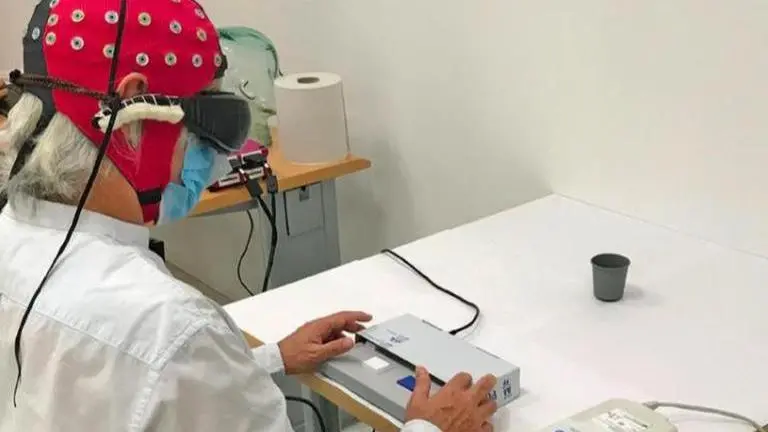Updated 25 May 2021 at 13:17 IST
'Milestone': Scientists partially restore blind man's vision with ’gene therapy’
“It’s a big step for the field," neurobiologist Flannery said. "Most important thing is that it is safe and permanent," he added about blind man's vision.
- Science News
- 3 min read

In a first, scientists in Europe and the US have been able to partially restore the eyesight for a blind man who suffered photoreceptor disease nearly 40 years ago. Employing the technique known as optogenetics, which involves altering cells such that they manufacture the light-sensitive proteins, scientists were able to get the vision back for the 58-year old patient. Now, he can recognize people, do the counting, locate and touch different objects.
Scientists used the optogenetic techniques and administered several injections in the blind man’s eye for several months. They used the stimulation with light-emitting goggles that transformed the visual objects into the light pulses projected into the patient’s retina. Goggles also analyzed changes in contrast and brightness. Although the man still can’t see completely without the goggles, scientists say that he is advised to wear them for several hours per day and that his vision has continued to improve in the two years since his injection. The study was published in the Nature Research Journals on May 24.
[Ophthalmologist José-Alain Sahel. Credit: Twittter/@iGEM_Pasteur]
Milestone towards #genetherapy that could #restoreVision now published @NatureMedicine: Clinical study with #optogenetic gene therapy proves partial vision restoration in a blind human. https://t.co/PIrqUyIgwW
— IOB.ch (@IOB_ch) May 24, 2021
“This is the first successful clinical application of a technique called optogenetics, which uses flashes of light to control gene expression and neuron firing,” the study revealed. The clinical trial was run by GenSight Biologics, headquartered in Paris, which enrolled people with retinitis pigmentosa (RP), a degenerative disease that diminished the eye’s photoreceptor cells. “Photoreceptors detect light and send electrical signals to retinal ganglion cells (RGCs), which then transmit the signal to the brain,” scientists explained. GenSight’s optogenetic therapy used a ‘virus’ that delivered the light-sensitive bacterial proteins into the blind man’s RGCs. They then tested his vision.
Advertisement
Ophthalmologist José-Alain Sahel of the University of Pittsburgh Medical Center in Pennsylvania, who led the study, said that the main challenge for the scientists was regulating the amount and type of light entering the eye. “A healthy retina uses a variety of cells and light-sensitive proteins to see a wide range of light. No protein can replicate what the system can do,” he said.
Meanwhile, John Flannery, a neurobiologist at the University of California, Berkeley said that the clinical therapy “It’s a big step for the field.” He added, “The most important thing is that it seems to be safe and permanent, which is really encouraging.”
Using a protein found in algae, a new technology partially restored the sight of a completely blind man. He can now locate, identify and count objects using the treated eye while wearing specialized goggles. Pitt’s José-Alain Sahel led the research: https://t.co/k2Akw5HQwl pic.twitter.com/C9aZyn0Bve
— University of Pittsburgh (@PittTweet) May 24, 2021
Images detected by brain 'accurately'
According to scientists, the human eye retina contains around 100 times more photoreceptors than RGCs, and hence, the resolution of images detected by RGCs will never be as good as natural vision. But the brain is able to interpret images accurately. “It’s interesting, but it’s an N of 1,” says Sheila Nirenberg, a neuroscientist at Weill Cornell Medical College in New York City. She added that some patients who were injected with higher doses of the protein had similar results. Neuroscientist Karl Deisseroth from Stanford University in California, who co-developed optogenetics as a laboratory technique, said that the study is important because it is the first time that its effects have been shown. After the therapy, the patient was able to locate a notebook as well as touch it while it was placed on a table in front of him with up to 92 percent accuracy.
Published By : Zaini Majeed
Published On: 25 May 2021 at 13:16 IST

